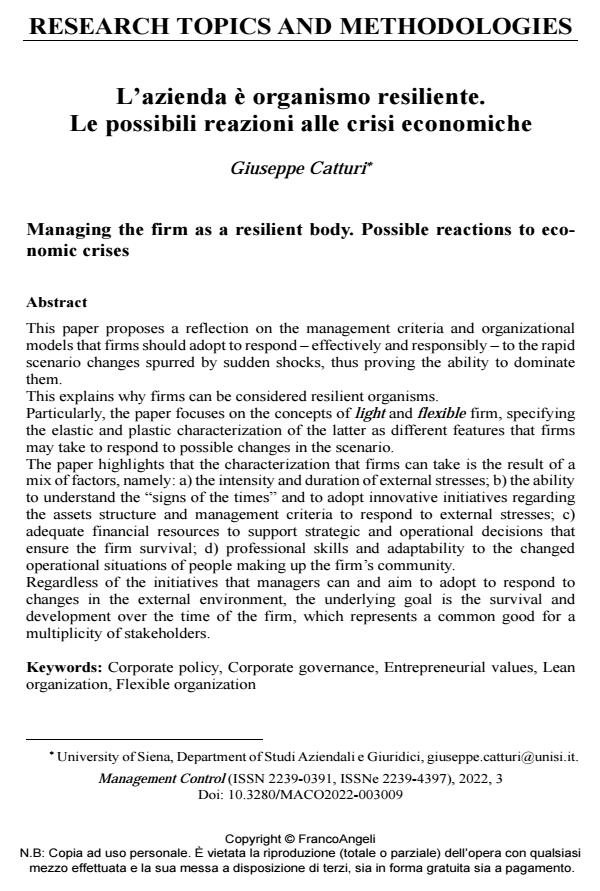L’azienda è organismo resiliente. Le possibili reazioni alle crisi economiche
Titolo Rivista MANAGEMENT CONTROL
Autori/Curatori Giuseppe Catturi
Anno di pubblicazione 2022 Fascicolo 2022/3
Lingua Italiano Numero pagine 26 P. 177-202 Dimensione file 275 KB
DOI 10.3280/MACO2022-003009
Il DOI è il codice a barre della proprietà intellettuale: per saperne di più
clicca qui
Qui sotto puoi vedere in anteprima la prima pagina di questo articolo.
Se questo articolo ti interessa, lo puoi acquistare (e scaricare in formato pdf) seguendo le facili indicazioni per acquistare il download credit. Acquista Download Credits per scaricare questo Articolo in formato PDF

FrancoAngeli è membro della Publishers International Linking Association, Inc (PILA)associazione indipendente e non profit per facilitare (attraverso i servizi tecnologici implementati da CrossRef.org) l’accesso degli studiosi ai contenuti digitali nelle pubblicazioni professionali e scientifiche
This paper proposes a reflection on the management criteria and organizational models that firms should adopt to respond - effectively and responsibly - to the rapid scenario changes spurred by sudden shocks, thus proving the ability to dominate them. This explains why firms can be considered resilient organisms. Particularly, the paper focuses on the concepts of light and flexible firm, specifying the elastic and plastic characterization of the latter as different features that firms may take to respond to possible changes in the scenario. The paper highlights that the characterization that firms can take is the result of a mix of factors, namely: a) the intensity and duration of external stresses; b) the ability to understand the "signs of the times" and to adopt innovative initiatives regarding the assets structure and management criteria to respond to external stresses; c) adequate financial resources to support strategic and operational decisions that ensure the firm survival; d) professional skills and adaptability to the changed operational situations of people making up the firm’s community. Regardless of the initiatives that managers can and aim to adopt to respond to changes in the external environment, the underlying goal is the survival and development over the time of the firm, which represents a common good for a multiplicity of stakeholders.
Parole chiave:Corporate policy, Corporate governance, Entrepreneurial values, Lean organization, Flexible organization
- Assessing Working Attitudes of Remote Workers to Enhance Management Control System: A Case Study of COVID-19 Lockdowns in Italy Gianni Onesti, Francesca Bellante, Riccardo Palumbo, in MANAGEMENT CONTROL 3/2024 pp.111
DOI: 10.3280/MACO2024-003006
Giuseppe Catturi, L’azienda è organismo resiliente. Le possibili reazioni alle crisi economiche in "MANAGEMENT CONTROL" 3/2022, pp 177-202, DOI: 10.3280/MACO2022-003009